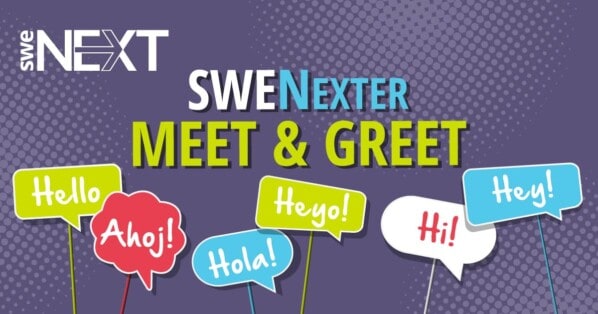Welcome, Michelle! Could you share what your professional background looked like before you took a career break?
I’m originally from Seattle, Wash., where I received my mechanical engineering degree from Seattle University in 2001 and was fortunate to transition to a job at The Boeing Company immediately after graduation.
I started off in Product Development, specifically in the 747 interiors group, building life-size mock-ups. Due to the tragic events on 9/11, it impacted the airline and manufacturing industry severely. I was faced with the option of being layed off or transferring to the Structural Engineering Design group.
During this time, I worked on multiple airplane programs, with my most memorable being the Large Cargo Freighter, otherwise known today as the Dreamlifter. I was responsible for most of the frame structures, coordinating with teams globally from inception to the final product.
My career break began in 2008. I was pregnant with my second child, and my husband accepted a job offer in Sweden. It was time to say goodbye to Boeing and start my expat life.
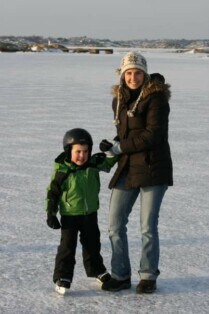

How long was your career break overall?
My career break was 14 years long! We lived in Gothenburg, Sweden, for two and a half years, and then moved back to the U.S. where we lived in Corpus Christi, Texas, for another two and a half years. My husband was anxious to take on another overseas job, so we jumped at an opportunity that took us to Singapore. After a short year in Southeast Asia, we made our next move to Geoje, South Korea.
In 2015, we finally settled in Frisco, Texas. I wasn’t ready to go back to a full-time career at that time, but realized I wanted something more. I had a passion for fitness, and in 2016 I decided to pursue my NASM Personal Training certification. I worked at a gym for about a year, but the evening shifts weren’t conducive to having kids.
This is when I decided to start my own business and built a gym out of my home garage. It offered great flexibility to work from home and didn’t overwhelm me. However, it was enough to keep me busy, and it allowed me to seek that human connection I was craving with adults.
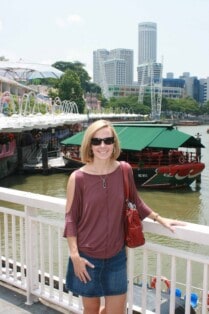
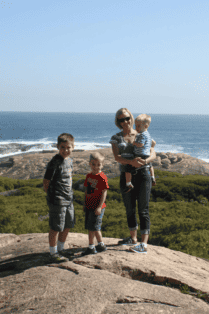
What made you want to return to the engineering workforce? What did that decision-making process look like?
My three boys are 17, 15, and 11 years old now, and much more independent. My fitness endeavor was fun; however, it wasn’t my true passion. I wanted to be innovating and building things again. I was in a place in my life where I didn’t HAVE to go back to work, but I WANTED to go back. It was a bit daunting as I didn’t know what it would look like or if it was even possible.
There were so many avenues I could take, and it took me well over a year to get clarity on my path forward. I started updating my LinkedIn profile and researching companies, but the struggle was not knowing anyone locally in the industries I was interested in, making it very difficult to make headway.
In the summer of 2022, I had a breakthrough while I was talking with one of my best friends, Rae Lutters (Program Manager and Chief Engineer, ecoDemonstrator, Boeing) , who I worked with during my Boeing days. She said, “Michelle, you’ve got so much value, and companies need you! There’s definitely an opportunity out there for you.”
She told me about a reentry program at Boeing for people who have taken career breaks, and then she said, “In October, I’m heading down to the WE22 conference in Houston. I’m speaking on a panel, and you’re going to come with me and find a job. Put your resume together — all sorts of companies will be there!”
I had nothing to lose, so I put together my first resume in 22 years with the help of my awesome sister. But when the nerves started to kick in the week before WE22, I was on the verge of telling Rae that I wasn’t coming. I was definitely scared. I had many thoughts of doubt and asked myself, “What the heck am I doing?!”
Long story short, I ended up going! Secretly, I just wanted to go see Rae and not engage in the event at all. I truly was out of my comfort zone ― but guess what, it was great. With my fancy new clothes and resume in hand, I spent 12 hours a day for two days on my feet, walking and talking to so many amazing people and companies.
I have to admit, going to WE22 was the best thing I did, however I had to swallow my fears and place trust in my faith.
What happened at WE22?
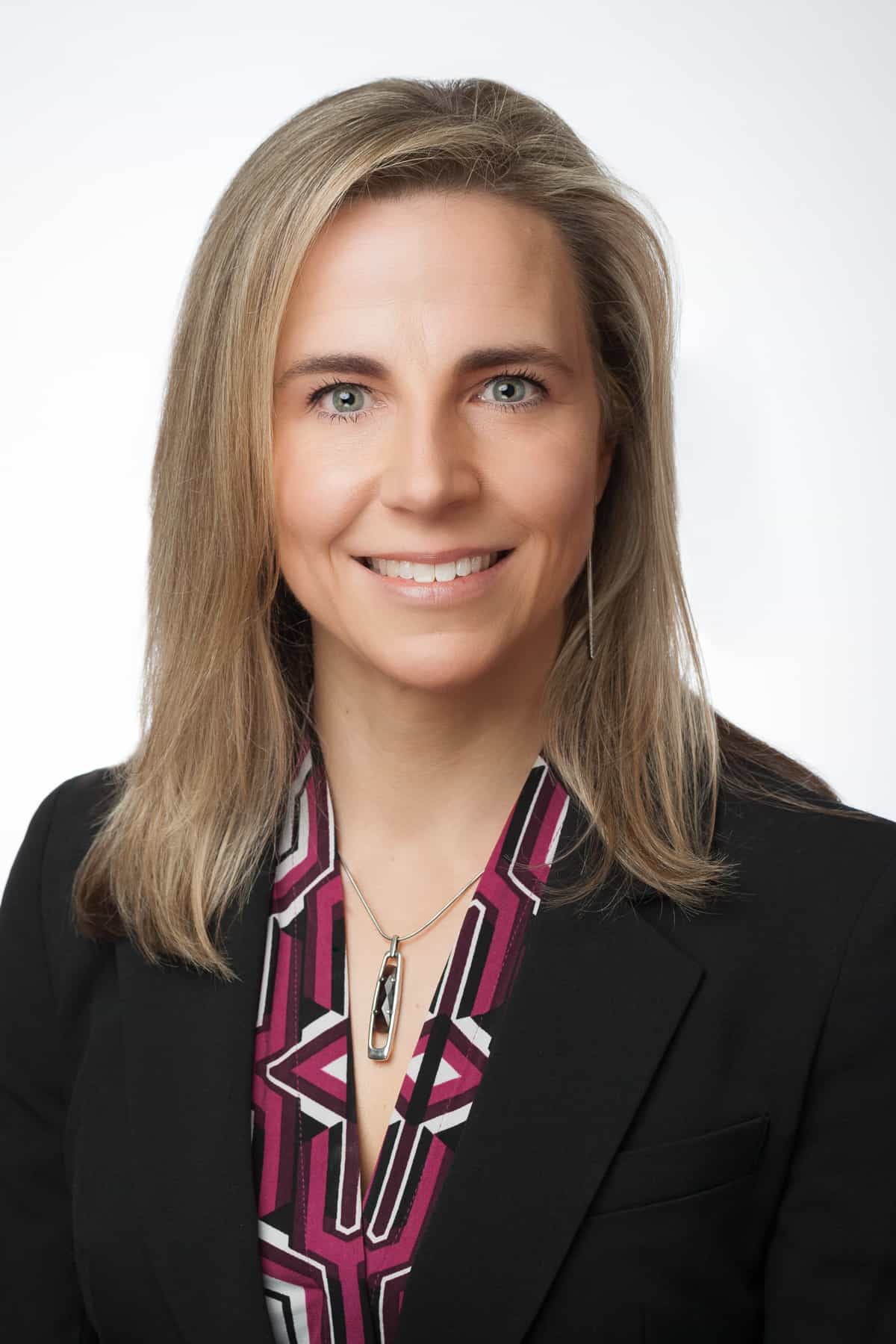
Rae and I got there early in the morning and stood in the long line to get in. After checking in we headed to the Boeing booth first. To my shock, I met Dannielle who I worked with on that Large Cargo Freighter earlier in my career! It was such a nice feeling to reminisce with someone at WE22. All of a sudden, I didn’t feel like a stranger.
My focus was to look for opportunities near Frisco, Texas ― not a remote position. I meandered from booth to booth, meeting people from many different industries from automotive to medical to aerospace. In the afternoon of my first day, I found Peterbilt, a semitruck manufacturer, which to my surprise was located in Denton, Texas. This company definitely interested me, because who doesn’t like cool trucks!
I had a wonderful conversation with the Peterbilt team at the career fair; the women were so full of energy, passion and pride. I noticed some note-taking on my resume, and it boosted my confidence when she said, “You live in Frisco?! We’re just 20 miles away in Denton, and we need engineers like you!”
Peterbilt excited me the most from WE22. However, I realized shortly after the event that I missed getting some contacts. When I got home, I tried to search for familiar faces on LinkedIn, without any luck. As I scrolled through Peterbilt’s job postings, one of them caught my eye. It was for an advanced manufacturing engineer on battery electric vehicles. The job description excited me because for the first time, I believed that I could do the work.
Surprisingly, about a month later, I got a phone call from Peterbilt. The HR recruiter shared that there was a job that may interest me. As it turned out, she was referring to the exact job posting I had already saved! We ended up scheduling a virtual interview for the next day. Inside I was thinking, “It’s been 22 years since my last interview, what was I supposed to do?!”
What was it like to interview again after your career break?
I have to admit, I winged it. I interviewed with four supervisors and the manager of the department. Overall, it went well, and I felt very positive about our conversation. One thing I made sure to do was also ask lots of questions.
One of those questions was, “How many women work in your department?” In short, out of 25 people, there was only one. At that moment, all I remember saying was, “I want this job. But if you’re serious about hiring me, I want it because I’m capable of doing the job, not because I’m a woman.”
I guess I made an impression because I was scheduled for my in-person interview right after Thanksgiving, and within a day, I got the job! The rest is now history. The manager at the time was envisioning a new project management role, which was new for the group. It has turned out to be a perfect fit for me. The timing and sequence of events has truly been a blessing.
What were some things that you were looking for in an employer?
I wanted an employer who understood that I had value and encouraged my growth. My technical skills were obviously diminished, but I had garnered other skills during my career break from moving around the world and building my own business. I could tell from the culture of the company that they really valued and appreciated the life skills and experiences that came with being a little bit older.
The opportunity itself interested me, and I loved the energy of the whole process. They accepted me as I was. So there wasn’t much more I could ask for.
What was it like on your first day back in the office?
I was so excited and nervous at the same time. The first three months were the hardest because while my employer understood my value, I didn’t always believe in myself. Self-doubt tried creeping in, and I constantly wondered, “Am I really going to give them what they expected?” At around the sixth-month mark, I really started gaining confidence, building a network and feeling comfortable within my role.
Can you share more about your experiences with self-doubt and imposter syndrome, as well as how you overcame them?

At 44 years old, most people my age have been in the industry for 20-plus years. I struggled with that, and my thoughts of self-doubt would occasionally get the better side of me. And I’d ask myself questions like, “Can I perform at the same level as my colleagues? How do I fit in? Am I good enough?”
Being upfront and transparent about those fears at work helped me realize that they were valid and normal thoughts, but nothing to be concerned about. I found that when I expressed my feelings and worries, I was reassured that I was right where I needed to be.
Many people shared with me that they had felt the same way at different points throughout their careers. This made imposter syndrome feel a lot more relatable because I knew I wasn’t alone.
Time is also a big factor in navigating imposter syndrome. Even those who have worked in engineering for 20-plus years may never see it go away. However, there are ways to figure out how to cope with it a little better. One way I’ve been able to navigate through this is building my professional network and meeting those who have walked in my shoes.
Now that you’re back in the engineering workforce, how do you find work-life balance?
For many years, my life was all about making sure everyone was taken care of. My family is and has been my priority. However, when going back to work full time, I felt like I had to let a piece of that go. It’s taken time, but I’ve told myself that everything will be okay; I may not be performing to the level I used to at home, but I know it’s enough.
Everything we now do as a family is much more intentional. We carve out time toward activities that are important to each of us. We plan trips at any opportunity we can. And lastly, we talk a lot more about setting goals. I love to think that my example of going back to work after 14 years is inspiring my children to believe that anything is possible.
The days are long, but rewarding. I typically get up at 4:30 in the morning to head to the gym, where I can then arrive at work by 7:30. Since my husband works in Houston all week, the activities with the kids continue past the time I get home. There are many days that are exhausting, so I do pay close attention to my body cues and pull back and ask for help when I need to.
What did your employer, your manager, and your colleagues do that worked well for you in returning to the workforce?

Since I started at the beginning of the year, I’ve had the chance to sit down with my supervisor and go over both my job goals and my personal development goals. My team has been very supportive and has encouraged me to take advantage of the different learning and networking opportunities the company has to offer.
One of those opportunities was participating in a speed mentoring event, where I met an array of senior level leadership for five minutes each. I’ve even taken advantage of sharing information about the SWE/iRelaunch STEM Reentry Task Force to possibly set something up for our company in the future. It has felt so good to use my personal story to advocate for a cause that means so much to me.
Recently, I’ve started talking more about my experience of reentering the workforce at work and within my social networks. As I’m learning more about the topic and sharing my experience with others, it’s been humbling to see my story helping others — including in places like this blog.
Was anything more of a challenge than you thought it would be?
I would say that the technical side was the biggest challenge for me. I left Boeing with a decent proficiency in CAD, but I don’t feel as comfortable using that anymore. Since my position is new to my organization, I’ve been fortunate to somewhat influence how my job role is defined and align it with my skills. Fortunately, there isn’t a large need for CAD work, since I focus more on project management activities.
What would you go back and tell yourself as you were returning to the workforce that you wish you had known then?
Definitely take it day by day and don’t overthink it. I truly believe in the organic process of just letting opportunities develop into what they are meant to be. That being said, I wish I had pushed myself a little more and not focused so much on how I compared to other people.
Another thing to remember is that everyone you meet at work is just another human, no matter what role they are in. They’re not better than you or more superior. At the end of the day, we’re all on the same playing field and working together
My biggest takeaway is ― be your authentic self and never stop building relationships.
How do you leverage SWE in your career now?
I often share about the SWE/iRelaunch STEM Reentry Task Force when I’m networking because I’d love for more companies to start reentry programs. As I mentioned earlier, I’m exploring how to get a reentry program incorporated into the company that I work for.
I’m also a SWE member, so there are a lot of mentorships and different things within SWE that I’ve been looking into. Here in September, Peterbilt is hosting a panel event at UNT through SWE. Myself and five other employees will be attending and presenting to a group of engineering students.
What would you say to someone who is thinking about returning to work but hasn’t made the leap yet?
Just do it. Put yourself out there and dive into networking as much as possible. That is my biggest recommendation ― take any opportunity that you can to meet people. Look up events that are happening in your area through different organizations or the industry that you’re interested in and start meeting people.
When you meet people face-to-face, that’s when things happen. I hear and read many stories of people applying and being rejected over and over again. I can’t reinforce enough to get out and start networking. That’s where the magic happens.
Are you looking to reenter the workforce? SWE has a variety of resources to help you on your journey, including:
- Advance Learning Center ― Explore our specially-curated content to help prepare you for reentering the workforce. Upon completion of the courses, you’ll earn the Return to Work badge, which you can proudly display on your social media and email.
- SWE Mentor Network ― Tap into this exclusive members-only community for mentoring services from members from across the globe in your area of engineering.
- Return-to-Work Opportunities
- Career Center ―SWE’s premier online recruitment resource for leading companies in the engineering and technology field committed to advancing women in STEM, with 10,000+ job postings from more than 650 employers, including the world’s largest engineering and technology firms.
- Reentry Programs ― The STEM Reentry Task Force features a list of nearly 30 companies offering reentry programs.
Plus, be sure to sign up for SWE’s Reentry Quarterly Newsletter.
Author
-

SWE Blog provides up-to-date information and news about the Society and how our members are making a difference every day. You’ll find stories about SWE members, engineering, technology, and other STEM-related topics.



